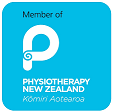
By Atif Razvi – Director/Senior Physiotherapist
In my many years of being a physio, I have come across countless clients who have been told or self diagnosed with a frozen shoulder. In some cases they are correct and other cases not so.
While frozen shoulder is commonly missed or confused with a rotator cuff injury. it has a distinct pattern of symptoms resulting in severe shoulder pain, loss of shoulder function and eventually stiffness. The more precise medical term for a frozen shoulder is “adhesive capsulitis”. So a frozen shoulder is a stiff and very painful shoulder that has significant and equal loss of both active and passive movement in most directions, but has a normal x-ray.
What is a Frozen Shoulder?
Frozen shoulder is a pathology that is still not fully understood. It is an inflammatory condition that affects the capsular tissue of the shoulder. All frozen shoulders loose significant amounts of movement, as mentioned this is usually in many directions, and can be in differing amounts. Oover head, reaching out to the side, and reaching behind the back are usually the main 3 movements limited. All ‘true’ frozen shoulders are extremely painful, extremely limiting, and extremely disabling.
It may be useful to get an xray to rule out other pathologies. The x-ray is first used to help exclude shoulder joint arthritis or other sinister pathology.
What are Frozen Shoulder Symptoms?
Frozen shoulder has three stages, each of which has different symptoms.
The 3 Stages are:
Freezing – characterised by pain around the shoulder initially, followed by a progressive loss of range of movement. Known as the RED phase due to the capsule colour if you undergo arthroscopic surgery.
Frozen – minimal pain, with no further loss or regain of range. Known as the PINK phase due to the capsule colour if you undergo arthroscopic surgery.
Thawing – gradual return of range of movement, some weakness due to disuse of the shoulder. Known as the WHITE phase due to the capsule colour if you undergo arthroscopic surgery.
Each stage can last on average 6 to 8 months if left untreated.
Who is Likely to Suffer from Frozen Shoulder?
Frozen shoulder is more likely to occur in people who are 35-50 years old.
It can be primary, with no known cause, or secondary, associated with an underlying illness or injury.
There are a number of risk factors predisposing you to developing frozen shoulder.
These include:
shoulder trauma,
surgery,
diabetes,
inflammatory conditions,
inactivity of the shoulder,
autoimmune disease,
cervical cancer, and
hyperthyroidism.
Approximately 20% of people who have had a frozen shoulder will also develop frozen shoulder in their other shoulder in the future!
How do you treat a Frozen Shoulder?
Treatment of a frozen shoulder is very varied from place to place, and from physio to physio! We could just leave them alone altogether and they may well spontaneously resolve, I think that will happen and I have seen it.
Other more invasive treatments for frozen shoulder include:
– intra-articular corticosteriod injections
– high volume hydrodilatation injections.
– manipulation under anesthetic
– arthroscopic release of contractures – this is now viewed as the gold standard.
Physiotherapy which of course I promoting can include:
– massage
– joint mobilisations
– manipulations,
– passive stretching,
– acupuncture,
– exercise
Can You Prevent Frozen Shoulder?
While the spontaneous onset frozen shoulder is of unknown origin, you can prevent frozen shoulder caused by disuse by avoiding long period of shoulder inactivity. e.g. post-surgery or shoulder injury.
If you do have a shoulder or arm injury, it is always advisable to seek the professional advice of someone such as your physiotherapist about exercises to help prevent a secondary frozen shoulder developing. This is especially important if you are in a high risk category.











